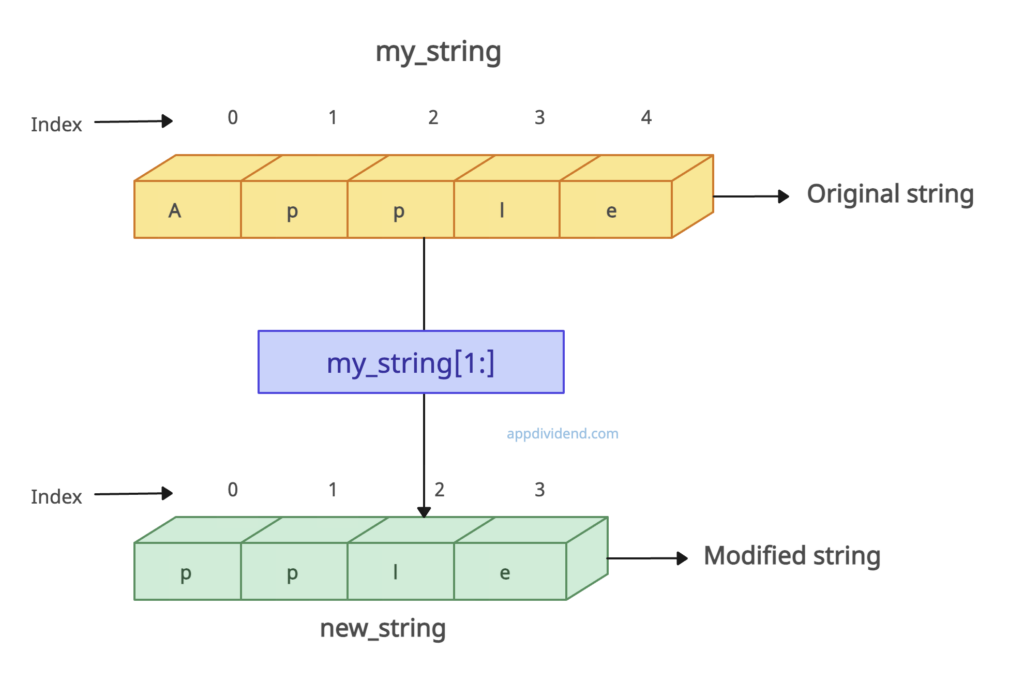Here are the ways to remove the first character from a string in Python:
Method 1: Using slicing
Removing the first character from a string can be achieved through slicing by starting the slice from index 1 and leaving the end index empty to include all remaining characters.
Visual Representation
Example
my_string = "Apple"
print("Original string:",my_string)
# Remove the first character
new_string = my_string[1:]
print("Modified string:",new_string)Output
Original string: Apple
Modified string: ppleMethod 2: Using lstrip()
The lstrip() method is used to remove leading characters (space is the default) from a string.
Visual Representation
Example
my_string = "Apple"
print("Original string:",my_string)
# Remove the first character using lstrip()
new_string = my_string.lstrip(my_string[0])
print("Modified string:",new_string)Output
Original string: Apple
Modified string: ppleMethod 3: Using re.sub()
The re.sub() function performs a search and replace operation on strings. In this case, the regular expression ‘^.’ is used, where the caret ^ denotes the start of the string, and the dot . matches any single character.
This function is useful, when you need more complex pattern matching.
Visual Representation
Example
import re
my_string = "Apple"
print("Original string:",my_string)
# The regular expression '^.' matches the first character of the string
new_string = re.sub('^.', '', my_string)
print("Modified string:",new_string)
Output
Original string: Apple
Modified string: ppleMethod 4: Using replace()
The replace() method replaces all occurrences of a specified substring, not just the first one. To limit the replacement to only the first occurrence, you can specify the maximum number of replacements using the count argument.
Example
import re
my_string = "Apple"
print("Original string:",my_string)
# Get the first character
first_character = my_string[0]
# Replace the first occurrence of the first character with an empty string
new_string = my_string.replace(first_character, '', 1)
print("Modified string:",new_string)
Output
Original string: Apple
Modified string: ppleMethod 5: Using join() and spilt()
The split() method, used with the argument 1, splits the string at the first occurrence of its initial character. The join() method then concatenates these parts into a new string, effectively removing the first character from the original string.
Example
my_string = "Apple"
print("Original string:",my_string)
# Get the first character of the string
first_character = my_string[0]
# Split the string at the first occurrence of the first character and then join it back
new_string = "".join(my_string.split(first_character, 1))
print("Modified string:",new_string)Output
Original string: Apple
Modified string: pple



